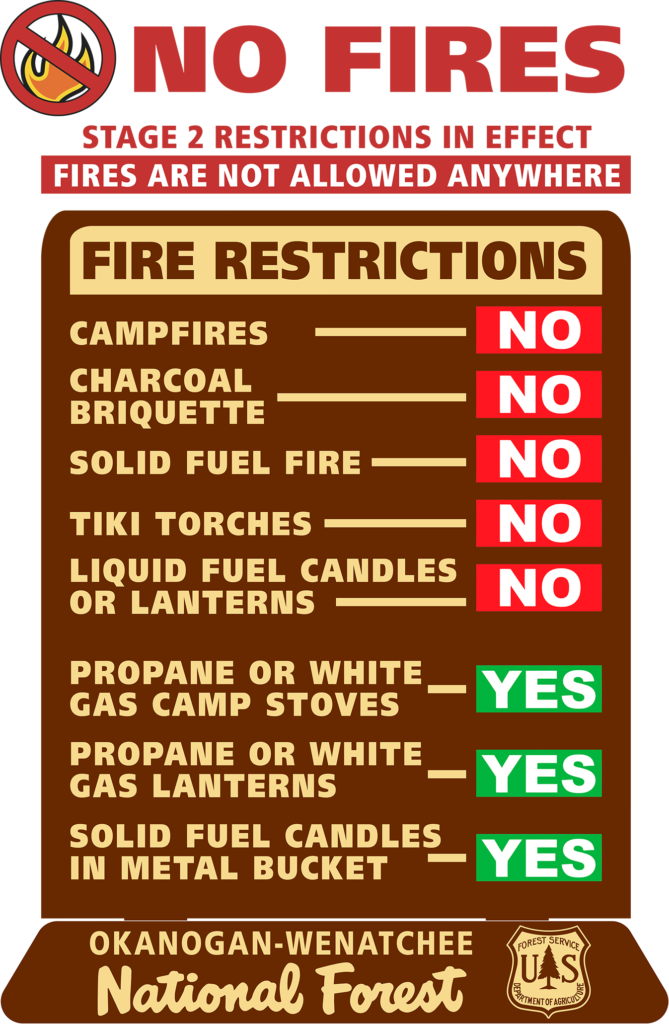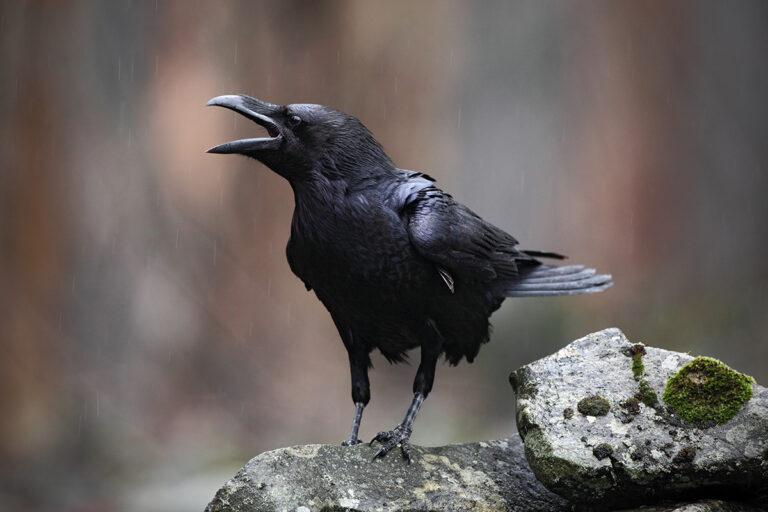Finding the most accurate, up-to-date information about regional burn bans, current wildfire conditions, and recreation and travel restrictions throughout the Northwest can be complicated and confusing.
Have you ever wondered:
- Is the campground where I have upcoming reservations still open?
- Are my favorite trails closed?
- Which roads are safe for travel?
- Where is it safe to go camping now?
- There’s no cell service in the national forest area I plan to visit; there isn’t a wildfire now, but how would I know if one breaks out miles away? What would be the evacuation plan or route?
With so many different state and federal agencies overseeing public lands, recreationists need accurate information that’s easily accessible. Cross a state boundary, like from Washington to Idaho, and there may be less restrictions—which isn’t always a good thing. (Wondering if an off-road vehicle could spark a fire near your campground can damper the mood.)
For some recreation destinations, the landscape, topography, and availability of access roads can increase the risk of a life-threatening wildfire event for campers and recreation users.
Do you know what you would do if a wildland fire starts down the road from your campground, and that’s the only major road out? Would you be able to quickly pack only your essentials into a vehicle—your people, pets, shoes, food, water, lanterns or flashlights, first-aid kit—and evacuate a campground? Would you be able to leave your tent or RV (if no time to pack or hitch), boat, kayaks, and bikes behind, and flee to safety in time?
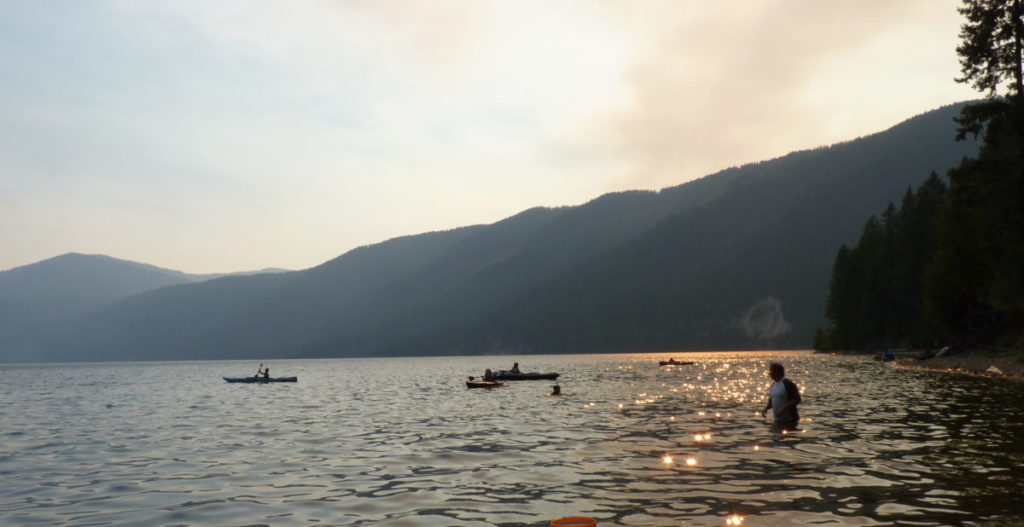
Where To Find Current Information
Local daily broadcast media and print news stories, though helpful, are secondary sources. Some reports may be too general, especially in the beginning of a fire incident, providing basic facts—when, where, who’s involved.
Fire conditions can change quickly. More detailed reports may only be provided when there are road closures, evacuation orders, or when tragedy occurs, especially when it’s a fire event hundreds of miles away or in a different state.
This is why recreationists need to find and use primary news sources, whether you’re at home wondering if your upcoming trip should be postponed or cancelled, or you’ve already arrived at your destination and have cell-service.
If you’re unsure if there is sufficient cell service at your final destination, write down phone numbers and addresses for the nearest ranger station or sheriff’s office so you know where you can get in-person information. If planning to backpack or primitive camp, check-in with a ranger before heading into the wilderness.
Here’s a round-up of the best sources for finding current information about wildland fires in the Pacific and Inland Northwest region. There are also online sources for current travel and safety information; visitor or service restrictions; and park, campground, and trail closures.
Regional Wildfire Agencies & Resources
- Northwest Interagency Coordination Center: Website homepage includes: (1) List of current fires in Washington and Oregon and their individual InciWeb links for more incident information; (2) Daily updates on current wildland fires (listed in alphabetical order according to fire name) and link to Northwest Large Fire Interactive Map.
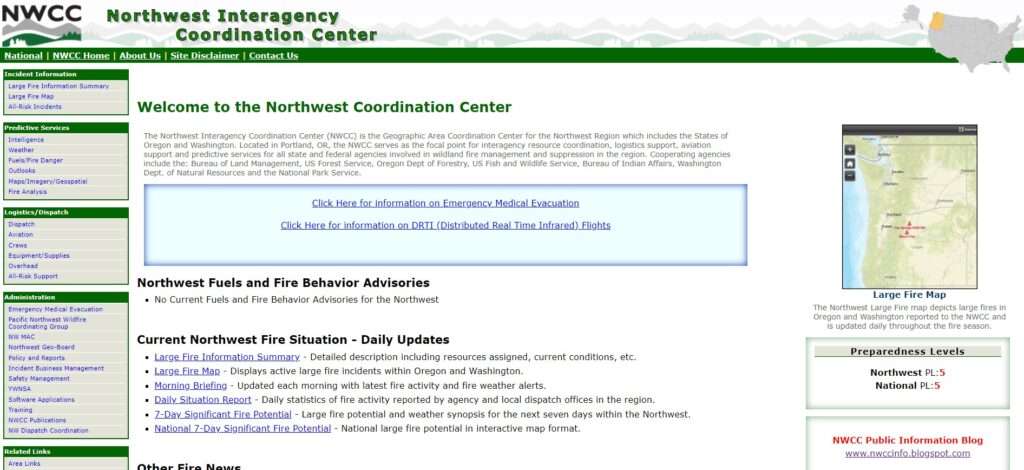
- InciWeb – Incident Information System: NW Regional links include morning briefing, 7-Day Significant Fire Potential, NWCC Fire Information Summary, Fire Map, and Daily Situation Report – inciweb.nwcg.gov/.
- Northeast Washington Interagency Communications Center: Regional fire activity on public lands in NE Washington that are managed by Bureau of Land Management, Colville National Forest, US Fish and Wildlife, and Northeast Region Washington State Department of Natural Resources – gacc.nifc.gov/nwcc/districts/NEWICC/index.html.
- National Weather Service: Fire Weather – weather.gov/fire/.
- Northwest Fire Science Consortium: A more logistical and technical resource geared towards firefighting agencies; homepage includes a list of incident information for the latest wildland fires in Washington and Oregon – nwfirescience.org/current-fire-information.
- Wildfire Today: News about recent fires – wildfiretoday.com/recent-fires/.
State Agencies
Oregon
Wildfire Resources – wildfire.oregon.gov
Washington
- Wildfire Resources (includes links for Spokane Status Updates) – governor.wa.gov/news-media/washington-wildfire-resources
- WA State Dept of Natural Resources (DNR) – dnr.wa.gov/programs-and-services/wildfire-resources
Idaho
Wildland Fires – deq.idaho.gov/air-quality/burning/wildland-fires
Montana
Fish, Wildlife, & Parks: Alerts and Restrictions – fwp.mt.gov/news/restrictions
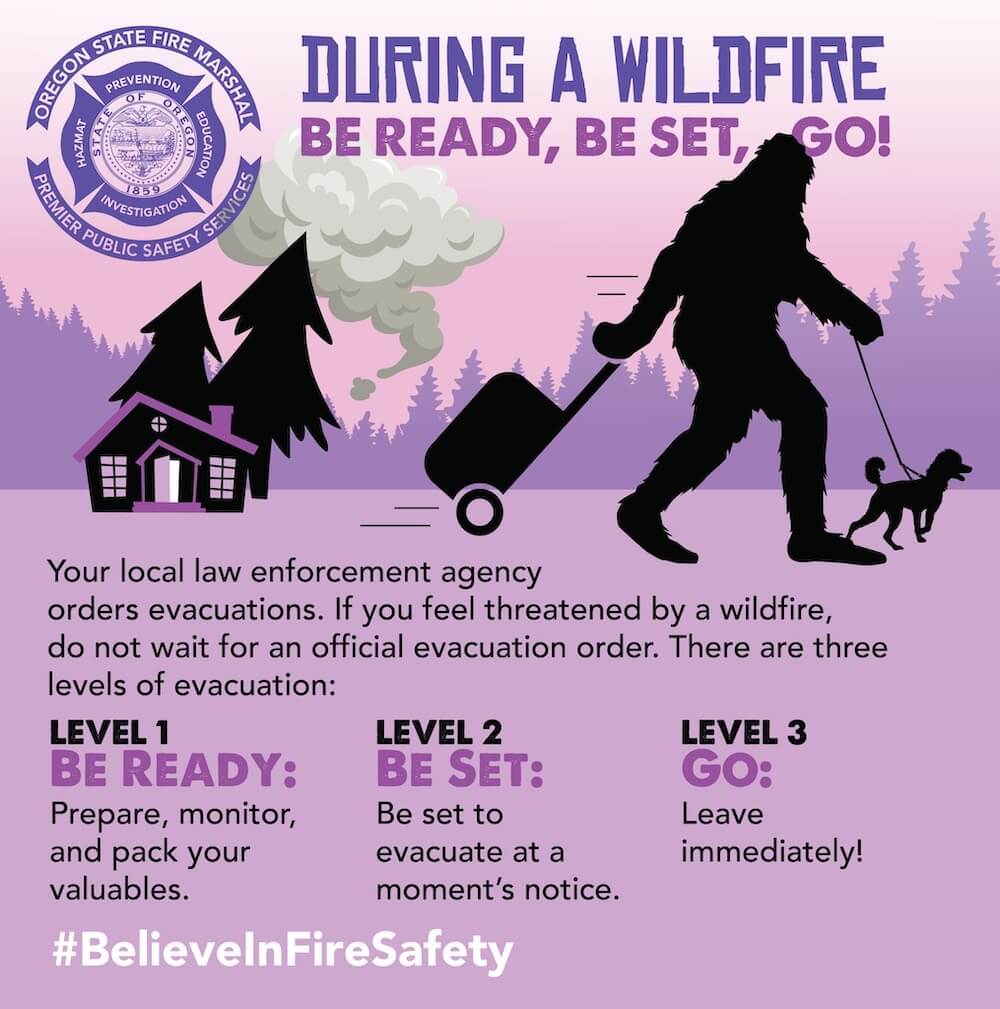
Public Land Closures & Travel Restrictions
State Parks & Public Lands
- Oregon State Parks & Recreation: Advisories and emergency closure notices; Park Status Update map.
- Washington State Parks & Recreation: statewide alerts
- WA State Department of Natural Resources (DNR) Land: closures
- Bureau of Land Management (BLM) Oregon-Washington: Fire Closures and Fire Restrictions
National Forests – Northwest (alert webpages)
- Boise
- Colville
- Deschutes
- Idaho Panhandle
- Kootenai
- Lolo
- Mt. Baker-Snoqualmie
- Mt. Hood
- Okanogan-Wenatchee
- Sawtooth
- Umatilla
- Willamette
- U.S. Forest Service – Wildland Fire (general wildfire information)
National Park Service
- Active Alerts in Parks (search by park name)
- Crater Lake
- Glacier
- Grand Teton
- Lake Roosevelt National Recreation Area
- Mt. Rainier
- North Cascades
- Olympic
- Yellowstone
Scenic Trails
- Continental Divide Trail (CDT)
- Pacific Crest Trail (PCT)
- Pacific Northwest Trail (PNWT)
Learn more from these OTO stories
- Travel & Safety in Wildfire Country (including links for evacuation planning)
- Learning About Wildfires: Resources for Children & Families
